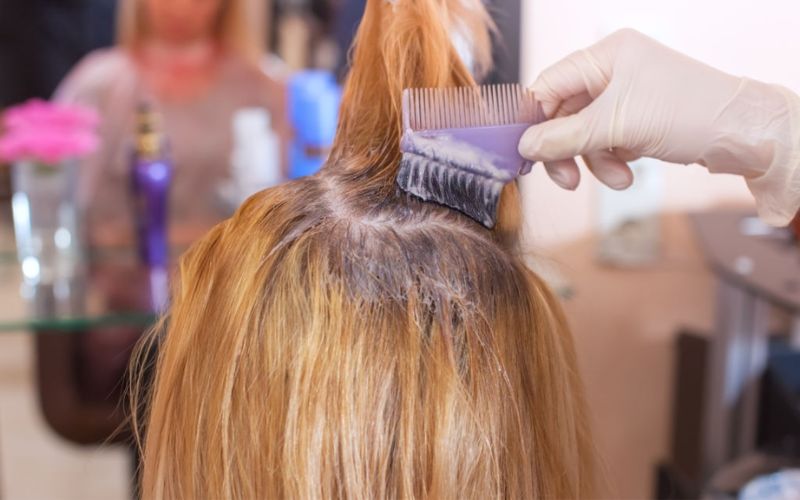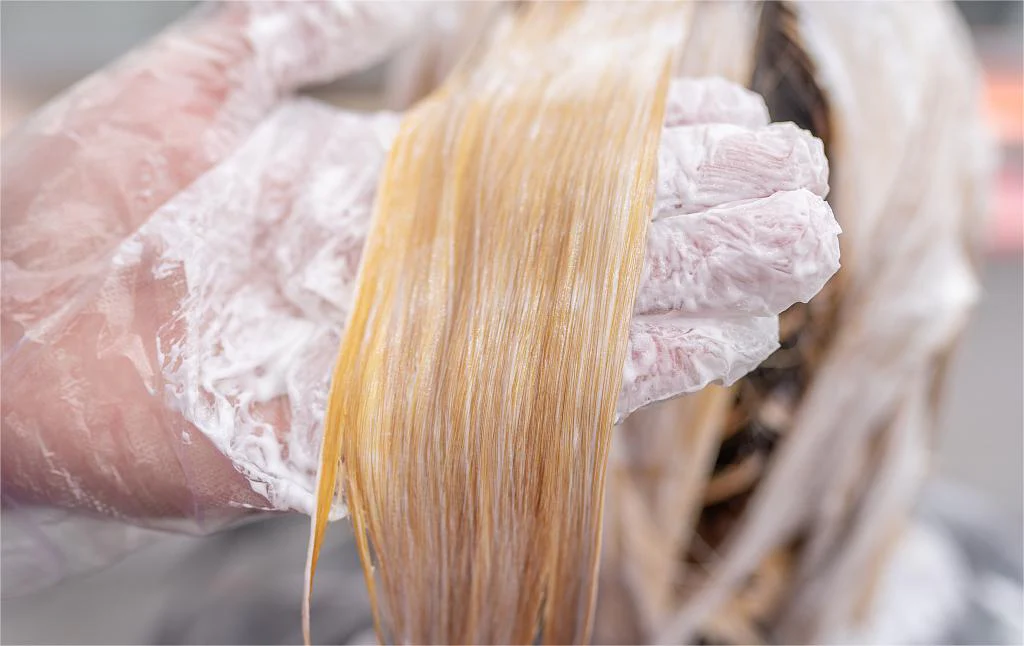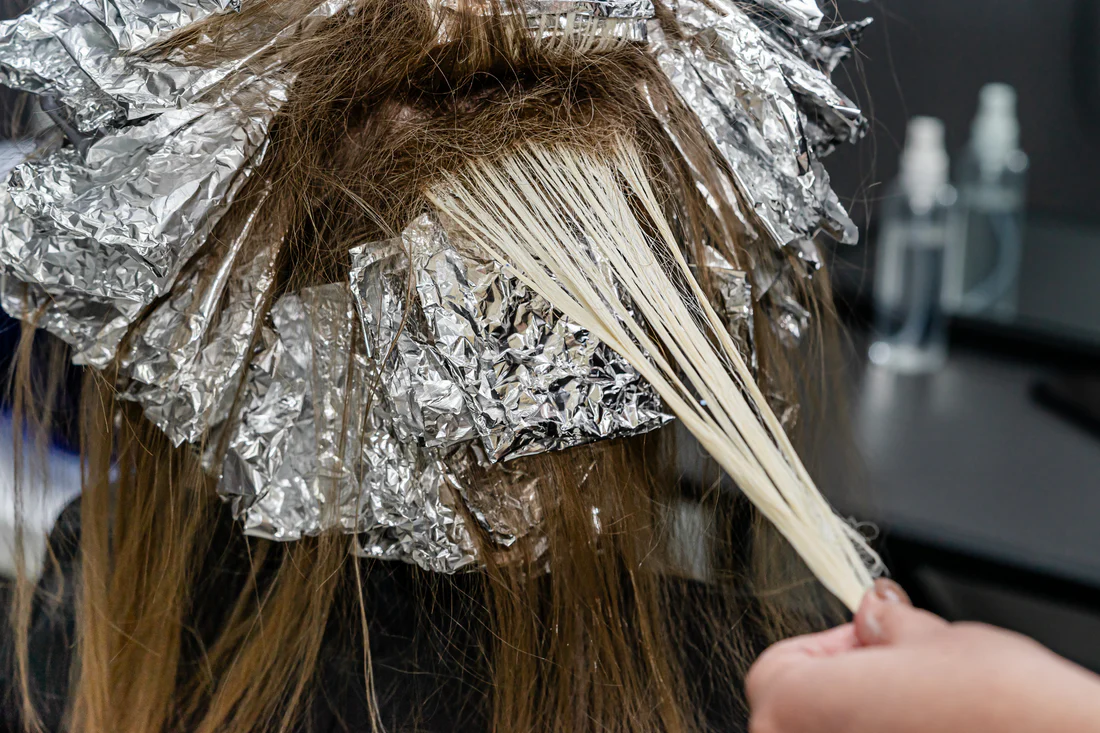When it comes to hair care and color treatments, a common question that arises is, “Can you put bleach on wet hair?” This query stems from the desire to achieve optimal results while minimizing damage to the hair. The application of bleach to wet hair presents a unique set of considerations and potential risks. Bleach is a powerful chemical agent used to lighten hair by removing its natural pigment.
Applying bleach to wet hair may dilute its potency, affecting the efficacy of the treatment and potentially leading to uneven results. Additionally, wet hair is more susceptible to damage from chemical processes, as the water can facilitate deeper penetration of the bleach into the hair shaft.
Understanding the implications of applying bleach to wet hair is crucial in making informed decisions about hair treatments and ensuring the health and integrity of your hair. So, can you put bleach on wet hair? Let’s delve deeper into this question to uncover the nuances and best practices associated with hair bleaching techniques.
Can You Put Bleach On Wet Hair

Applying bleach to wet hair can result in uneven and unpredictable outcomes, potentially causing damage and irritation to the scalp and hair. When hair is wet, its cuticle layer is raised, making it more susceptible to the harsh chemicals in bleach. This can lead to excessive drying, breakage, and even chemical burns. Additionally, the water present in wet hair can dilute the bleach, affecting its potency and leading to inconsistent color results.
Moreover, the moisture in wet hair can create a barrier, preventing the bleach from penetrating evenly, resulting in splotchy or patchy color. It’s essential to ensure that hair is completely dry before applying bleach to achieve the desired results safely and effectively. Preparing the hair properly by washing and thoroughly drying it beforehand allows the bleach to work more uniformly and minimizes the risk of damage.
Always follow the instructions provided with the bleach product and consider consulting a professional hairstylist for advice and assistance to avoid potential mishaps and safeguard the health of your hair and scalp.
Read More: Can You Use Body Lotion on Your Face?
Factors to Consider When Bleaching Your Hair

Bleaching your hair can be an exciting way to change your look and experiment with different styles. However, it’s essential to approach the process with caution to avoid damaging your hair or ending up with results that aren’t what you expected. Before you take the plunge into bleaching, there are several factors you should carefully consider.
From hair health to desired results, let’s explore the key considerations when bleaching your hair.
1. Hair Health
The first and most crucial factor to consider before bleaching your hair is its current health. Bleaching can be harsh on your strands, especially if they’re already damaged or weakened. If your hair is already dry, brittle, or chemically processed, bleaching could cause further damage, leading to breakage, split ends, and overall hair health deterioration.
Before bleaching, assess the condition of your hair. If it’s in good health, you’re more likely to achieve satisfactory results with minimal damage. However, if your hair is already compromised, it may be wise to focus on restoring its health before attempting any bleaching treatments. Deep conditioning treatments, regular trims, and avoiding excessive heat styling can help improve the condition of your hair over time.
2. Hair Type and Color
Another important consideration is your hair type and natural color. The natural color and texture of your hair will influence how it reacts to the bleaching process and the final result you achieve. For example, darker hair colors may require more bleaching sessions to lift the pigment effectively, while lighter hair colors may achieve the desired result more quickly.
Additionally, consider your hair’s texture. Fine hair may be more susceptible to damage from bleaching, while thicker or coarser hair may be more resilient. Understanding your hair type and its characteristics can help you determine the best approach to bleaching and manage your expectations regarding the results.
3. Desired Result
Before bleaching your hair, it’s essential to have a clear idea of the desired result you want to achieve. Whether you’re aiming for a subtle highlight, a full platinum blonde, or a vibrant fashion color, knowing what you want will guide the bleaching process and help you communicate effectively with your stylist if you’re seeking professional assistance.
Keep in mind that achieving certain hair colors may require multiple bleaching sessions, especially if you’re starting with dark or heavily pigmented hair. Be realistic about what is achievable based on your hair’s current color and condition, and consider consulting with a professional stylist for personalized advice if you’re unsure.
Further More: How to Patch Test Skincare
4. Bleaching Method
There are various methods for bleaching hair, ranging from at-home kits to professional salon treatments. Each method has its pros and cons, and the best option for you will depend on factors such as your hair type, desired result, and comfort level with DIY hair treatments.
At-home bleaching kits are convenient and cost-effective but may carry a higher risk of damage if not used correctly. Professional salon treatments offer expert guidance and typically use higher-quality products, but they can be more expensive.
Consider your level of experience with hair treatments and your willingness to take risks when choosing a bleaching method. If you’re uncertain, it may be worth investing in a professional consultation to discuss your options and ensure the best possible outcome.
5. Aftercare Routine
Proper aftercare is crucial for maintaining the health and appearance of bleached hair. After bleaching, your hair will be more vulnerable to damage and dehydration, so it’s essential to establish a nourishing aftercare routine to keep it looking and feeling its best.
Invest in high-quality moisturizing and conditioning products specifically designed for bleached or colour-treated hair. Avoid excessive heat styling, which can further damage your strands, and use heat protectant products when heat styling is necessary.
Regular trims can also help prevent split ends and breakage, keeping your hair looking healthy and vibrant between bleaching sessions. Finally, be gentle with your hair, avoiding harsh brushing or pulling, especially when it’s wet and more prone to damage.
Bleaching your hair can be a fun and transformative experience, but it’s essential to approach it with caution and consideration for your hair’s health and characteristics. By carefully evaluating factors such as hair health, type, desired result, bleaching method, and aftercare routine, you can achieve beautiful bleached hair while minimizing damage and maintaining its overall health and vitality.
Whether you choose to bleach at home or seek professional assistance, prioritizing the well-being of your hair will ensure a positive bleaching experience and stunning results.
FAQ’s
What happens if I bleach my hair wet?
Bleaching wet hair can lead to uneven results as the water can dilute the bleach, making it less effective in some areas and more potent in others. This may result in patchy or uneven bleaching and potential damage to the hair.
Is it better to bleach bath wet or dry hair?
It is generally recommended to bleach bath dry hair rather than wet. Bleaching wet hair can dilute the bleach solution, leading to inconsistent results. Dry hair allows the bleach to penetrate evenly, resulting in more predictable outcomes.
Can I bleach freshly washed hair?
Bleaching freshly washed hair is not ideal. Washing your hair before bleaching can strip away natural oils that act as a protective barrier, leaving your hair more susceptible to damage from the bleach. It’s best to wait a day or two after washing before bleaching your hair.
How long to leave bleach in the wet hairhair?
The duration you leave bleach in your hair depends on various factors such as your hair’s starting color, its condition, and the desired level of lightness. Typically, bleach is left on the hair for about 20 to 45 minutes, but it’s essential to monitor the process closely and rinse it out as soon as you achieve the desired level of lightness to avoid over-processing.
Should you shampoo after bleaching?
It’s generally recommended to avoid shampooing immediately after bleaching your hair. Bleach opens up the hair cuticles, making them more susceptible to damage from shampooing. Instead, rinse your hair thoroughly with lukewarm water and follow up with a conditioner to restore moisture and pH balance. You can shampoo your hair a day or two after bleaching if necessary, using a gentle, sulfate-free shampoo to minimize further damage.
Conclusion
In conclusion, the question of whether you can put bleach on wet hair underscores the delicate balance between achieving desired results and preserving hair health. While it’s technically possible to apply bleach to wet hair, doing so poses significant risks. Wet hair’s raised cuticle layer makes it more susceptible to the harsh chemicals in bleach, potentially leading to uneven results, damage, and irritation to the scalp.
Dilution of the bleach and uneven penetration due to moisture can result in patchy color and increased vulnerability to breakage. To safeguard hair integrity, it’s paramount to ensure hair is thoroughly dry before bleaching and to follow best practices, considering factors like hair health, type, desired result, chosen bleaching method, and diligent aftercare. By prioritizing these considerations, individuals can achieve their desired hair transformations safely and effectively while minimizing the risk of damage and maintaining overall hair health.

